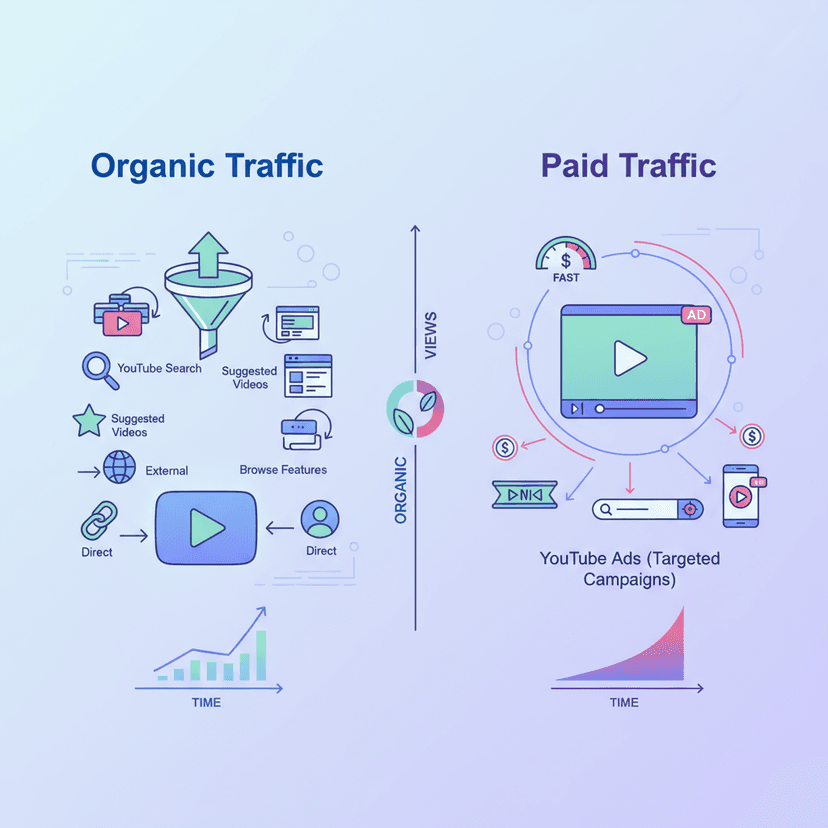Copywriting is the art of writing content that is engaging and persuasive, motivating readers to take action – whether it’s clicking, buying products/services, subscribing, or converting. When it comes to “websites,” copywriting is essential for creating content on various landing pages. However, did you know that writing copywriting for websites differs from writing for other channels? So, let’s explore these differences and how we can create excellent website content.
In this article, we’ll look at how to create effective PPC reports and what components are necessary for reporting.
The Difference in Writing Copywriting for Websites
Anyone in the copywriting industry knows that writing should have some goal or objective, whether it’s writing advertising emails, social media captions, or Search Ads and out-of-home advertising. Naturally, content in each channel cannot be used interchangeably. Writing copy on websites has several differences, such as:
With these differences, we need techniques for writing copywriting on websites. Let’s see what they are.
17 Techniques for Writing Engaging Website Copy
When visitors come to a website, we provide them with the information they’re looking for completely, while also encouraging them to “move on” – such as clicking to view additional products/services, subscribing, or registering for newsletters. Let’s see what techniques can help improve our website copywriting.
1. Understand Your Target Audience
First and foremost, understanding who you’re talking to is crucial. We recommend studying your brand’s Buyer Persona or analyzing your ideal customer group, considering both demographic, interest, and behavior data. When we understand our target audience, we can write content that resonates with visitors more effectively.
2. Build Your Brand Through Writing
Don’t let visitors feel “confused” about what we do or what we sell. There are many times when brands focus on beautiful designs and attractive click buttons but fail to communicate their products or services clearly. Therefore, copywriters should thoroughly understand the brand’s products or services before communicating them clearly through website content.
3. Thoroughly Understand What You Offer
Tracking conversions is very important because every advertisement requires viewers to do something after clicking or viewing the advertisement. It is considered the main indicator of the PPC report.
4. Focus on Customer Benefits
Instead of just talking about product features, focus on how it will solve problems or meet customer needs. This can be incorporated into product descriptions or even headings.
5. Pay Attention to Headlines and Subheadings
According to statistics, the average time visitors spend on a website page is 53 seconds. That means most website visitors tend to read content quickly. Therefore, headlines and subheadings are very important. Design sentences or phrases to be clear, concise, and engaging.
6. Limit Content Volume
Research on user behavior on websites (Website User Behavior) shows that the more content there is, the less people will read. If there is content between 400-1,200 words, users will only read 20% of the content. And if there is only 200 words or less on a website page, users actually read over 50% of the content. Therefore, try to make the content as concise as possible while still providing complete and important information, taking SEO into consideration.
7. Use Powerful CTAs
Call-to-Action or CTA is an important part that encourages readers to take the action we want. Avoid using generic words like “Apply Now” or “Register Today,” but try designing phrases that are more specific.
8. Work with UX
Don’t forget Microcopy or short texts that help guide users through your website. It can powerfully inform, inspire, and even impress. For example, short sentences in the Search Bar or short service names on images, or try designing content that works with UX/UI to create a memorable journey for website visitors.
9. Use Different Words
Currently, there are more than 1 billion websites and 175 new websites are created every minute. Therefore, to stand out and create a unique identity that is different from competitors, try experimenting with synonyms or finding new vocabulary to use on our website. As the saying goes, “Writing is a creative job.”
10. Optimize for SEO
As mentioned earlier, after creating interesting content, you should also optimize it for SEO so that the website appears well on search engine results pages (SERPs).
11. Use Trust Markers
Trust Markers are signs of credibility, such as customer reviews, awards the brand has received, to quotes from business partners. We can display these elements on the website to build trust.
12. Emphasize Numbers
Numbers are a quick way to demonstrate credibility, especially when they are large and specific. Whether it’s the number of products sold, the number of branches, or others, numbers not only influence readers but also attract website visitors’ attention.
13. Perform A/B Testing
Test different versions of content to see which performs better. You can do both A/B testing or split testing, test different CTAs, different headlines, and even UX/UI elements to find the best version. And don’t forget to keep improving.
14. Prioritize Smartphone Display
We recommend writing copywriting always keeping smartphone screen display in mind because most users visit websites via their smartphones. In addition, statistics from early 2024 confirm that 67% of Website Traffic comes from Mobile Devices.
15. Don’t Forget to Edit and Proofread
Small mistakes can negatively affect the brand’s image. According to Tidio, 97% of survey respondents said that grammatical errors make them perceive the brand as unprofessional and lacking credibility. So, don’t forget to proofread carefully before publishing content, whether it’s spelling, word choice, or other considerations that may affect the reading experience.
In conclusion, writing copywriting for websites is both an art and a science that requires practice and experience. Understanding the differences between writing for websites and other channels, and applying the various techniques we have discussed, will help you create engaging, persuasive content that delivers good results. Remember that good writing requires constant practice and improvement. Try applying these techniques and observe the results.
About Relevant Audience
We are Relevant Audience, a Digital Performance Marketing Agency specializing in SEO and one of the leading Digital Agencies offering comprehensive digital marketing services to support businesses in reaching their target audiences at the right time, place, and device (Right Time, Right Place, Right Device).
Our services cover SEO services, Search Marketing, Social Media Ads, Search Ads, to Influencer Marketing, and we are also a SEO Company that is a Google Partner. Our team consists of specialists ready to provide consultation and find solutions that meet business needs.
Contact us for more information, consult online marketing
Tel: 02-038-5055
Email: info@relevantaudience.com
Website: www.relevantaudience.com







